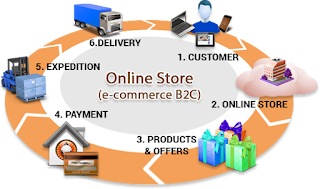Wordpress
might be simple, but it is certainly not short of functionality. Many
people are of the opinion that it is a platform to build blogs. This
view does a great injustice to the immense capabilities of Wordpress
especially in fields such as ecommerce. Its versatility is evidenced
by its wide range of capabilities that allows customers to go live
with a well-designed and secure online store while saving much on
costs as well.
This
article looks at 5 of the top Wordpress plugins and their specific
functionality, including area they could improve upon.
1.
WP eCommerce
Though
now surpassed by the Woocommerce plugin, WP eCommerce still offers a
wide range of features and is used by a large number of people all
over the world. That WP eCommerce has a huge community and is led and
driven by it is a great advantage though some of its features still
have limiting conditions.
2.
Woocommerce
 The
official No.1 in the league, Woocommerce has cemented its position as
the default plugin for Wordpress. The Wordpress themes shop WooThemes
maintains Woocommerce and the plugin ia actively supported by its
developer community. The only disadvantage of this plugin is that it
is priced quite high with just a 1 year license.
The
official No.1 in the league, Woocommerce has cemented its position as
the default plugin for Wordpress. The Wordpress themes shop WooThemes
maintains Woocommerce and the plugin ia actively supported by its
developer community. The only disadvantage of this plugin is that it
is priced quite high with just a 1 year license. But people still think it’s worth paying for its sheer
ease-of-use!
3.
Shopp
Feature-rich
and packed with immense configuration capabilities, Shopp combines a
free plugin with paid support. Almost all of its features have
strikingly different features from what you would have seen
elsewhere. Coupons is a case in point. With a good add-on price and a
detailed feature-set, Shopp is definitely up there with the best
plugins Wordpress has on offer. Now, if only it had a few more
payment providers!
4.
Cart66
You
must have heard of this plugin owing to its price. But do you know
that it also offers features free for which others charge a fee?
Cart66 (Pro, not its Cloud counterpart) is a Wordpress plugin that
gives you total value for money on the security front. On the payment
front too, Cart66 stands head and shoulders above the rest. Its
compatibility with almost any Wordpress plugin and its rich-feature
set have fuelled its rise to the top.
5.
MarketPress
MarketPress
is a Wordpress ecommerce plugin that differs from the rest in that it
allows you to run multiple stores yourself. With stock notification
for different products, coupon tracking facility, and even giving
third-party vendors the power to run your store, MarketPress is a
plugin that is immense in its versatility. Coming to the price tag
($19), though it might seem very low, you actually need to pay much
more for supports and upgrades!




